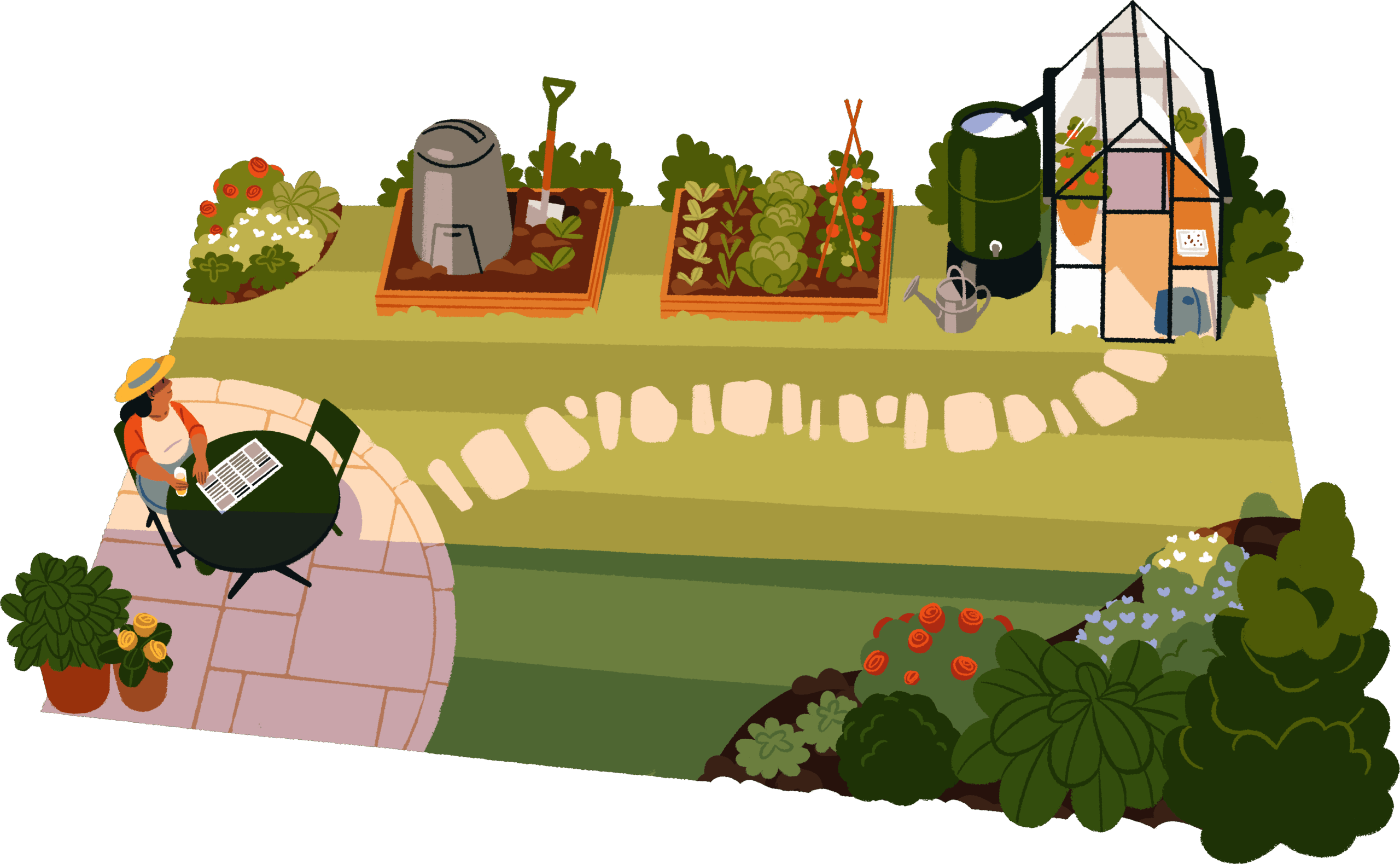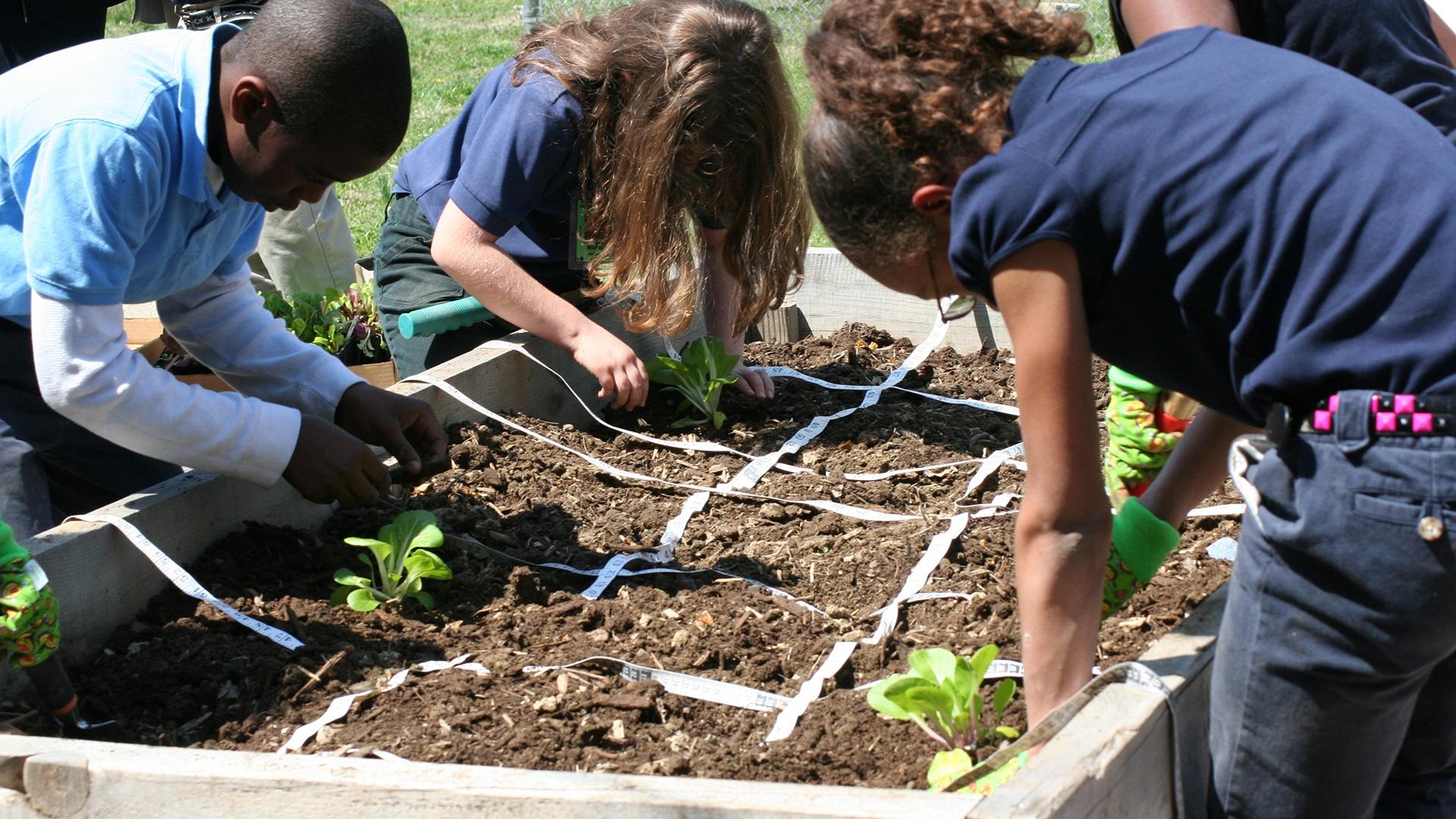Unlock Sustainable Living: Your Comprehensive Guide to Implementing a Permaculture Design Course
Are you dreaming of a life more connected to nature, a life where your actions nurture the planet, and where you can grow your own food with ease? Then, a Permaculture Design Course (PDC) might just be the key you’ve been searching for. This comprehensive guide will take you on a journey through the world of permaculture, providing you with the knowledge and inspiration to successfully implement a PDC and transform your life and your surroundings.
What is Permaculture? A Foundation for Sustainable Living
Before diving into the specifics of a PDC, it’s crucial to understand the core principles of permaculture. Permaculture, a portmanteau of “permanent agriculture” and “permanent culture,” is a design system that seeks to create sustainable human settlements and agricultural systems by mimicking the patterns and relationships found in natural ecosystems. It’s not just about gardening; it’s a holistic approach to living that encompasses everything from food production and building design to community development and financial systems.
At its heart, permaculture is guided by a set of ethics and principles. The core ethics are:
- Earth Care: Taking care of the planet and its resources.
- People Care: Ensuring that everyone has access to the resources they need.
- Fair Share: Setting limits to consumption and reinvesting surplus resources.
These ethics are brought to life through a set of design principles, including:
- Observe and Interact: Spend time observing the site and the natural processes at work before making any changes.
- Catch and Store Energy: Harvest and store resources like sunlight, water, and rainwater.
- Obtain a Yield: Ensure that the system produces useful outputs.
- Apply Self-Regulation and Accept Feedback: Monitor the system and make adjustments as needed.
- Use and Value Renewable Resources and Services: Prioritize renewable resources and services over finite ones.
- Produce No Waste: Design systems that minimize waste and maximize resource use.
- Design From Patterns to Details: Start with the big picture and then refine the details.
- Integrate Rather Than Segregate: Connect different elements of the system to create beneficial relationships.
- Use Small and Slow Solutions: Start small and build slowly, allowing for adjustments along the way.
- Use and Value Diversity: Embrace diversity in all aspects of the system.
- Use Edges and Value the Marginal: Utilize edges and marginal areas to maximize productivity.
- Creatively Use and Respond to Change: Be adaptable and responsive to change.
By understanding these ethics and principles, you can begin to see the world through a permaculture lens, recognizing opportunities for sustainable design in every aspect of your life.
Why Take a Permaculture Design Course? Benefits and Opportunities
So, why should you consider taking a PDC? The benefits are numerous and far-reaching. A PDC provides you with the knowledge, skills, and confidence to design and implement permaculture systems in your own life and community. Here are some of the key advantages:
- Comprehensive Knowledge: You’ll gain a deep understanding of permaculture principles, design methodologies, and practical techniques.
- Practical Skills: You’ll learn hands-on skills in areas such as site assessment, water harvesting, soil building, food production, and building design.
- Design Expertise: You’ll develop the ability to design sustainable systems tailored to your specific needs and environment.
- Community Connection: You’ll connect with like-minded individuals and become part of a supportive community.
- Personal Empowerment: You’ll gain the confidence to create positive change in your life and the world around you.
- Environmental Stewardship: You’ll learn how to live more sustainably and reduce your environmental impact.
- Increased Resilience: You’ll build resilience in your life by becoming more self-sufficient and less reliant on external systems.
- Career Opportunities: A PDC can open doors to new career paths in areas such as sustainable design, landscaping, and education.
Whether you’re a homeowner, a gardener, an environmentalist, or simply someone who wants to live a more sustainable life, a PDC can provide you with the tools and knowledge you need to achieve your goals. It’s also a fantastic way to network with others passionate about the same things.
Choosing the Right Permaculture Design Course: Key Considerations
Selecting the right PDC is a crucial step in your permaculture journey. With a wide variety of courses available, it’s important to choose one that aligns with your goals, learning style, and budget. Here are some factors to consider:
- Course Content: Ensure that the course covers the core permaculture principles, design methodologies, and practical skills. Look for a course that includes a mix of theory, hands-on activities, and site visits.
- Instructors: Research the instructors and their experience. Look for experienced permaculture designers with a proven track record.
- Location and Format: Consider the location, format (online, in-person, or hybrid), and duration of the course. Choose a format that fits your schedule and learning preferences.
- Cost: PDC prices vary widely. Determine your budget and look for courses that offer good value for money.
- Reviews and Testimonials: Read reviews and testimonials from past students to get an idea of the course quality and learning experience.
- Accreditation: Some courses are accredited by permaculture organizations. Accreditation can be a sign of quality, but it’s not always necessary.
- Course Structure: Does the course offer a good balance of theory and practical application? Does it include design exercises and opportunities for hands-on learning?
By carefully considering these factors, you can find a PDC that will provide you with the knowledge and skills you need to succeed in your permaculture endeavors. Don’t rush the process; take your time to research and find a course that really resonates with you.
Preparing for Your Permaculture Design Course: Before You Start
Once you’ve chosen a PDC, it’s time to prepare for your learning adventure. Preparing in advance can help you get the most out of the course. Here are some tips:
- Read Permaculture Books: Familiarize yourself with the basic concepts of permaculture by reading books by Bill Mollison, David Holmgren, and other permaculture pioneers.
- Explore Permaculture Websites and Blogs: Browse permaculture websites and blogs to learn about current trends, projects, and resources.
- Visit Permaculture Sites: If possible, visit permaculture sites in your area to see permaculture principles in action.
- Assess Your Site: If you plan to design a permaculture system on your property, begin to assess your site. Observe the microclimates, soil conditions, and existing vegetation.
- Gather Materials: Collect materials such as notebooks, pens, and a camera to document your learning journey.
- Clear Your Schedule: Make sure you have enough time to attend the course and complete any assignments or projects.
- Connect with the Community: Reach out to other students or permaculture practitioners in your area to build connections before the course begins.
By taking these preparatory steps, you’ll be ready to dive into the PDC and make the most of the learning experience. It’s like getting a head start on a marathon; the preparation will make the race itself much more enjoyable and successful.
Key Topics Covered in a Permaculture Design Course
A PDC typically covers a wide range of topics, providing you with a comprehensive understanding of permaculture design. Here are some of the key areas you can expect to explore:
- Permaculture Ethics and Principles: A deep dive into the core ethics and design principles that guide permaculture practice.
- Site Assessment and Analysis: Learning how to assess your site, analyze its resources, and identify opportunities for sustainable design.
- Water Harvesting and Management: Designing systems for rainwater harvesting, greywater recycling, and water conservation.
- Soil Building and Fertility: Understanding soil health, composting, and other techniques for building fertile soil.
- Food Production and Gardening: Designing and managing food gardens, including vegetable gardens, fruit trees, and perennial crops.
- Forest Gardening and Agroforestry: Creating food forests and integrating trees into agricultural systems.
- Animal Systems: Integrating animals into permaculture systems for food production, soil fertility, and pest control.
- Building Design and Energy Efficiency: Designing energy-efficient buildings and using renewable energy sources.
- Community Design and Social Permaculture: Applying permaculture principles to community development and social systems.
- Legal and Financial Aspects: Understanding the legal and financial aspects of permaculture projects.
- Design Methodologies: Learning various design methodologies and tools for creating permaculture systems.
- Specific Design Projects: Many courses will have you work on a design project, applying all the knowledge you’ve gathered.
The specific topics covered may vary depending on the course, but these are the core areas that most PDCs will address. You’ll be exposed to a wealth of information and practical skills.
Hands-on Activities and Practical Skills You’ll Gain
One of the most valuable aspects of a PDC is the opportunity to engage in hands-on activities and develop practical skills. These activities will give you the confidence to implement permaculture designs in the real world. Here are some of the hands-on experiences you can expect:
- Site Visits: Visiting established permaculture sites to see permaculture principles in action and learn from experienced practitioners.
- Soil Testing and Analysis: Learning how to assess soil health and identify ways to improve soil fertility.
- Composting and Vermicomposting: Building and managing compost piles and worm bins.
- Water Harvesting System Design: Designing and constructing rainwater harvesting systems.
- Garden Design and Planting: Designing and planting gardens, including vegetable gardens, herb gardens, and food forests.
- Building Construction and Design: Participating in hands-on building projects, such as building garden structures or constructing natural buildings.
- Food Preservation: Learning techniques for preserving food, such as canning, drying, and fermenting.
- Mapping and Design Exercises: Creating site maps and developing permaculture designs for specific projects.
- Hands-on Workshops: Participating in workshops on topics such as seed saving, natural building, and other practical skills.
These hands-on experiences will solidify your understanding of permaculture principles and give you the confidence to apply your knowledge in practical situations. It’s one thing to read about permaculture; it’s another to get your hands dirty and experience it firsthand.
Designing Your Own Permaculture System: Step-by-Step Guide
One of the primary goals of a PDC is to equip you with the skills to design your own permaculture system. Here’s a step-by-step guide to help you get started:
- Define Your Goals: Determine your goals for your permaculture system. What do you want to achieve? What resources do you want to produce?
- Assess Your Site: Conduct a thorough site assessment, considering factors such as climate, soil, water, existing vegetation, and microclimates.
- Observe and Analyze: Observe the site over time to understand its patterns and natural processes. Analyze your observations to identify opportunities and constraints.
- Develop a Design Plan: Create a design plan, incorporating the permaculture principles and considering your goals, site assessment, and observations.
- Zone and Sector Planning: Use zoning and sector planning to organize your site elements efficiently.
- Element Selection and Placement: Select the elements you want to include in your system (e.g., vegetable gardens, fruit trees, water harvesting systems) and determine their placement.
- Create a Detailed Design: Create a detailed design, including planting plans, construction plans, and irrigation plans.
- Implement Your Design: Begin implementing your design, starting with the elements that are easiest to implement.
- Monitor and Evaluate: Monitor your system regularly and evaluate its performance. Make adjustments as needed.
- Refine and Adapt: Permaculture design is an iterative process. Refine your design and adapt to changing conditions over time.
This step-by-step guide provides a framework for designing your own permaculture system. Remember that the design process is a creative and dynamic process. Be open to experimentation and enjoy the journey.
Implementing Your Permaculture Design: Practical Tips and Strategies
Once you’ve completed your PDC and designed your permaculture system, it’s time to implement your design. Here are some practical tips and strategies to help you succeed:
- Start Small: Don’t try to do everything at once. Start with a small, manageable project and gradually expand your system.
- Prioritize Your Needs: Focus on the elements that will provide the greatest benefit to your system and address your most pressing needs.
- Work with Nature: Observe natural processes and work with them, rather than against them.
- Use Local Resources: Utilize local resources, such as recycled materials and local plants, to reduce costs and environmental impact.
- Get Help: Don’t be afraid to ask for help from experienced permaculture practitioners or other members of the permaculture community.
- Document Your Progress: Keep a journal or notebook to document your progress, observations, and challenges. This will help you learn from your experiences.
- Be Patient: Permaculture systems take time to establish. Be patient and persistent, and don’t get discouraged by setbacks.
- Celebrate Your Successes: Celebrate your successes, no matter how small. This will help you stay motivated and keep moving forward.
- Connect with Community: Engage with local permaculture groups for support and shared learning.
Implementing a permaculture design is a rewarding journey. By following these tips and strategies, you can increase your chances of success and create a thriving, sustainable system.
Common Challenges and How to Overcome Them
While permaculture offers a wealth of benefits, it’s important to be aware of the potential challenges you may encounter. Here are some common challenges and how to overcome them:
- Time Commitment: Permaculture design and implementation can be time-consuming. To overcome this, start small, prioritize your tasks, and break down large projects into smaller, manageable steps.
- Cost: Implementing permaculture systems can involve costs for materials, tools, and plants. To manage costs, start with low-cost projects, utilize recycled materials, and seek out grants or funding opportunities.
- Learning Curve: Permaculture involves a steep learning curve. To overcome this, take a PDC, read books and articles, attend workshops, and connect with experienced practitioners.
- Climate and Environmental Conditions: Climate and environmental conditions can present challenges. To address these, choose plants and design elements that are well-suited to your local climate and environment.
- Pest and Disease Management: Pests and diseases can affect your permaculture system. To manage these, use natural pest control methods, such as companion planting and beneficial insects.
- Maintenance: Permaculture systems require ongoing maintenance. To manage maintenance, design systems that are easy to maintain and involve minimal labor.
- Lack of Knowledge: You may encounter gaps in your knowledge. To address this, continue to learn, research, and seek out information from experienced practitioners.
- Resistance from Others: You may encounter resistance from others who are unfamiliar with permaculture. To overcome this, educate others about the benefits of permaculture and share your experiences.
By being aware of these potential challenges and developing strategies to overcome them, you can increase your chances of success and create a thriving permaculture system.
Resources for Continued Learning and Support
Your journey with permaculture doesn’t end with a PDC. There are many resources available to support your continued learning and growth. Here are some valuable resources:
- Permaculture Organizations: Join permaculture organizations, such as the Permaculture Association, to connect with other practitioners, access resources, and stay up-to-date on the latest developments.
- Books and Publications: Read books and publications by permaculture pioneers, such as Bill Mollison, David Holmgren, and Geoff Lawton.
- Websites and Blogs: Explore permaculture websites and blogs to learn about current trends, projects, and resources.
- Online Courses and Workshops: Take online courses and workshops to expand your knowledge and skills.
- Local Permaculture Groups: Join local permaculture groups to connect with other practitioners and participate in local events.
- Permaculture Design Certifications: Consider pursuing advanced permaculture design certifications to deepen your knowledge and expertise.
- Conferences and Events: Attend permaculture conferences and events to learn from experts, network with other practitioners, and see permaculture in action.
- Seed and Plant Suppliers: Source seeds and plants from reputable permaculture suppliers.
- Local Experts: Seek guidance from local permaculture experts and mentors.
By utilizing these resources, you can continue to learn, grow, and connect with the permaculture community. It’s a lifelong journey of learning and discovery.
Embrace the Permaculture Lifestyle: A Call to Action
Taking a Permaculture Design Course is more than just acquiring knowledge; it’s an invitation to transform your life and create a more sustainable and resilient future. It’s a call to action. It’s a chance to become part of a global movement of people who are actively working to heal the planet and create a better world for future generations.
By embracing the principles of permaculture, you can:
- Reduce your environmental impact: Live in harmony with nature and minimize your footprint.
- Increase your self-sufficiency: Produce your own food, harvest rainwater, and generate renewable energy.
- Build a stronger community: Connect with like-minded individuals and create a supportive network.
- Create a more resilient future: Prepare for climate change, economic instability, and other challenges.
- Live a more fulfilling life: Connect with nature, learn new skills, and make a positive impact on the world.
So, take the leap. Enroll in a Permaculture Design Course today. Embark on this journey of discovery, learning, and positive change. The world needs you, your skills, and your passion for a sustainable future. Start your permaculture adventure and become a part of the solution.
The future of our planet depends on the choices we make today. Embrace the permaculture lifestyle and become a steward of the earth. Your journey towards a sustainable future starts now.



